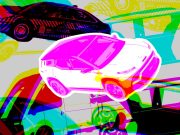The car troubleshooting sector is undergoing significant development, driven by advancements in technology. Valued at $40.51 billion in 2024, the market is projected to reach $55.93 billion by 2029, reflecting a market expansion rate of 7.0%.
—
## Industry Analysis and Future Outlook
### Present Situation and Influencers https://diagxcar.com/
The vehicle analysis systems market is propelled by increasing vehicle complexity, particularly in advanced driver-assistance systems (ADAS) and electric powertrains. Stringent global emission regulations further mandate accurate analysis to ensure compliance.
—
## Cutting-Edge Solutions Reshaping Troubleshooting
### AI-Driven Systems
AI-driven diagnostics are overcoming traditional limitations like manual mistakes and unreliable judgments. Systems like Amazon’s predictive analytics use cognitive models to analyze vehicle information, reducing service time by 30% through predictive alerts for components like engines and batteries.
—
## Impact of Electric and Autonomous Vehicles
### Battery-Powered Vehicle Analysis Problems
Battery-powered car troubleshooting require specialized tools for high-voltage systems. Tools like Specialized analysis equipment offer extensive memory and high-resolution screens to handle complex data from energy storage units. Photovoltaic-powered vehicles, such as Advanced solar cars, further necessitate analysis systems for tracking solar panels and power management.
—
## Regional Market Dynamics
### Western Markets
These regions lead due to mature vehicle markets and high adoption of connected technologies. The microchip policy has spurred $52 billion in semiconductor investments critical for EV diagnostics, while the General Data Protection Regulation mandates secure data handling in cloud-based systems.
—
## Hurdles and Constraints
### Technological and Financial Barriers
Steep upfront expenses for sophisticated equipment, such as AI scanners priced over $5,000, limit restricted use. Rapid technological obsolescence forces periodic replacements, straining budgets for independent workshops.
—
## Upcoming Innovations and Possibilities
### AR and VR Technologies
AR glasses overlay diagnostic procedures onto physical components, reducing service time by 35%. Virtual reality training tools train technicians on battery-powered car solutions, enhancing training effectiveness by 50%.
—
## Conclusion
The automotive diagnostics industry stands at a pivotal juncture, where machine learning, smart car solutions, and eco-friendly practices converge to redefine vehicle maintenance. While obstacles like cybersecurity risks and technician deficits persist, strategic investments in cloud infrastructure and cooperative innovation—such as NVIDIA’s partnerships with other industry leaders—will drive industry dominance. Stakeholders must prioritize scalable solutions, ensuring diagnostics evolve in lockstep with automotive innovation to deliver safer, cost-effective, and sustainable transportation systems.


















